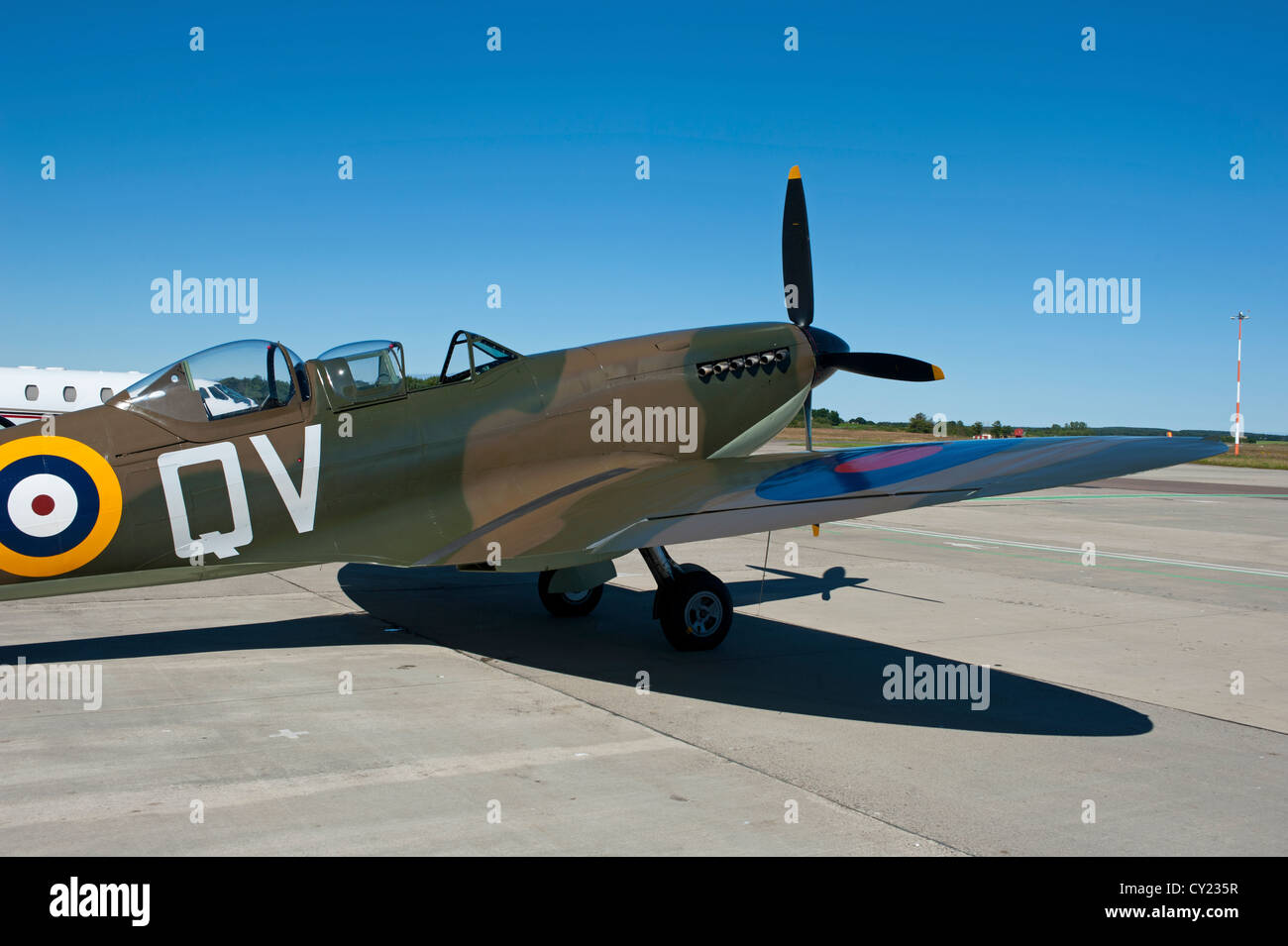Supermarine 509 Spitfire T9C at Inverness Dalcross Airport. SCO 8728

Image details
Contributor:
David Gowans / Alamy Stock PhotoImage ID:
CY235RFile size:
70 MB (1.9 MB Compressed download)Releases:
Model - no | Property - noDo I need a release?Dimensions:
6063 x 4035 px | 51.3 x 34.2 cm | 20.2 x 13.5 inches | 300dpiDate taken:
9 August 2012Location:
Inverness, Dalcross Airport. Highland Region. Scotland. United Kingdom.More information:
Supermarine developed a two-seat variant known as the T Mk VIII to be used for training, but none were ordered, and only one example was ever constructed (identified as N32/G-AIDN by Supermarine). In the absence of an official two-seater variant, a number of airframes were crudely converted in the field. These included a 4 Squadron SAAF Mk VB in North Africa, where a second seat was fitted instead of the upper fuel tank in front of the cockpit, although it was not a dual-control aircraft and is thought to have been used as the squadron "run-about." The only unofficial two-seat conversions that were fitted with dual-controls were a small number of Russian lend/lease Mk IX aircraft. These were referred to as Mk IX UTI and differed from the Supermarine proposals by using an inline "greenhouse" style double canopy rather than the raised "bubble" type of the T Mk VIII. In the postwar era, the idea was revived by Supermarine and a number of two-seat Spitfires were built by converting old Mk IX airframes with a second "raised" cockpit featuring a bubble canopy. Ten of these TR9 variants were then sold to the Indian Air Force along with six to the Irish Air Corps, three to the Royal Dutch Air Force and one for the Royal Egyptian Air Force. Currently a handful of the trainers are known to exist, including both the T Mk VIII, a T Mk IX based in the U.S., and the "Grace Spitfire" ML407, a veteran flown operationally by 485(NZ) Squadron in 1944